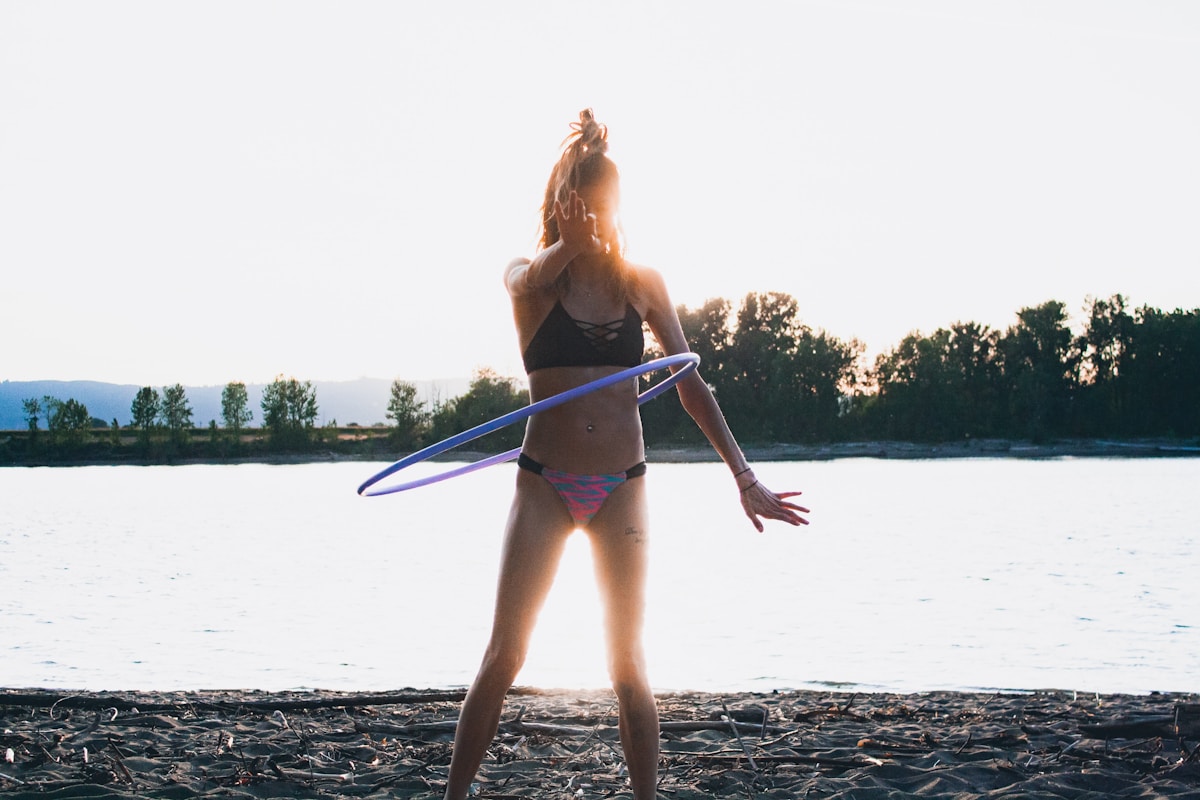What size hoop should I buy?
As a kid you might have happily spun a hoop round your waist for hours. Then when you've come to try it again as a grown up, maybe you've found that it just doesn't work. Frustrating - right?
What's gone on?
You have probably grown. Consider your size now in relation to that hoop compared to a child's size. Starting to get the picture? Most toy shop and pound shop hoops are *teeny*. Some are even too small for kids! Read on for a rough guide to choosing a grown up sized hoop for now you.

Sizing your hoop
Often beginners go for something that comes up to their belly button for on-body fitness or learning to hoop.
Some people size their hoops to fit their inside leg or inside arm measurement for ease of swizzy tricks like escalators and folds.
A big chunk of it's personal choice... that said these are some popular options:
- BEGINNER - 5 foot 8 • wants a core workout - 40'' Body Rocking Hoop
- BEGINNER - 5 foot 5 • fitness and hoopdance hoop - 38'' Dance Hoop
- BEGINNER - 5 foot 9 • curvy, wants to explore movement after a long break - 42'' Body Rocking Hoop
- BEGINNER - any size! • wants to learn off body fancy tricks - 34'' or 36'' PolyPro
- IMPROVER - 5 foot 7 • want to learn more spins and rolls - shifts from 36'' Dance Hoop to 32'' polypro
I would love to give you a definitive answer here, but it's very much about finding the right 'fit' for your size, style and rhythm. If you're not sure and want to do anything on body start with that floor to belly-button measurement and we can work from there.

- one of Emilie's 'Rainbow Pulse' dance hoops.
Different types of hoop
Polypro - is thin, light and fast, also a great options for learning off-body tricks.
Dance hoops - are mid-weight and mid-speed (MDPE tubing)
Body Rocking Hoops - not really for kids, but perfect for adults, a slow heavier hoop for maximum groove. (MDPE tubing)
Now for the physics bit...

So, a bigger heavier hoop will move more slowly and require more effort to move. Often people think lighter is going to be easier, but it's not necessarily the case!
A heavy hoop is...
- good if you're new to hooping
- good if you want to work your core
- maybe heavy for tricks
- bigger on the calorific burn
The heaviest hoops on this site are the 'Body Rocking Hoops'. I don't make, sell or recommend the bumpy weighted fitness hoops.
If you're super fit e.g. a yoga ninja then you might not want this option even as a beginner. Sometimes a Dance Hoop or a polypropylene hoop is good if it meets your natural rhythm.
I started with a 42'' Body Rocking hoop as a skinny person with zero coordination. Never spin a heavy hoop on your face.

This lake-side hooper is using a coloured polypropylene hoop.
Light hoops are...
- fast and fun
- great for off-body tricks
- springy!
Often used by insta-hoopers. They are generally harder to get spinning on your body and personally I don't think they're ideal for learing on-body hooping.